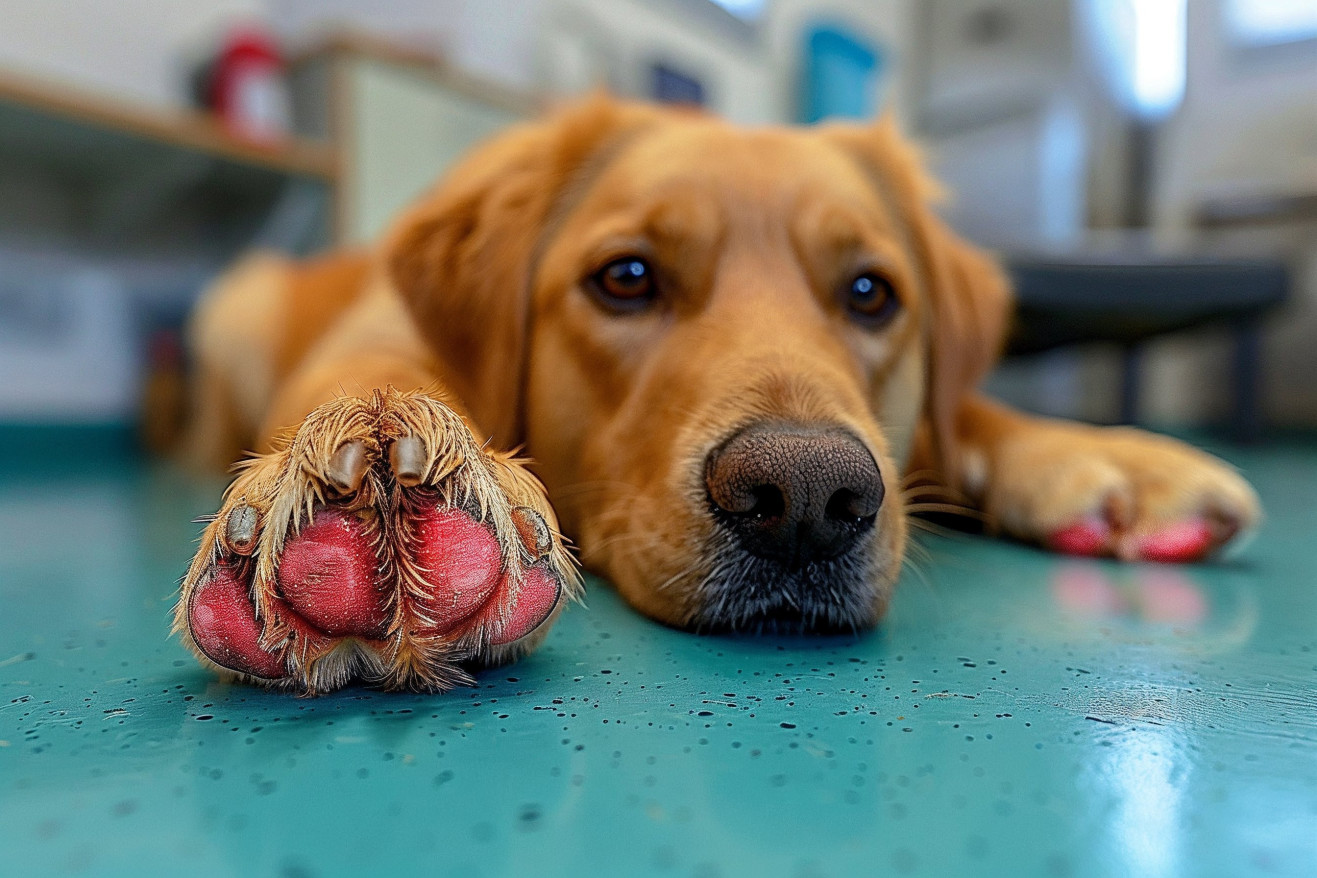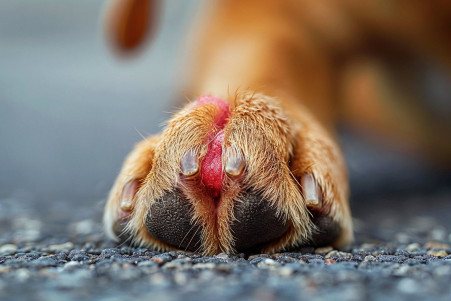Why Is My Dog's Paw Swollen? Causes and Treatment Options
8 May 2024 • Updated 7 May 2024

If you’ve noticed that your dog is limping or favoring one of their paws and you see that it’s swollen, there are a number of different reasons that this could be happening, from something as simple as a minor injury to a more serious health issue. Swollen paws in dogs can be caused by an insect bite or sting, puncture wound, broken toenail, or an underlying health condition like arthritis or cancer. That said, if the swelling doesn’t go down after a day or two, it’s important to take your dog to the vet so that they can determine the cause and the best way to treat it.
To help you figure out why your dog’s paw is swollen, we’ve researched information from veterinarians and other experts in the field of veterinary medicine and dog health. In this article, we’ll cover the causes of swollen paws in dogs, as well as the risk factors and treatment options for each cause, all of which have been studied and proven in the scientific community. This way, you can not only find a solution to the immediate problem but also help your dog stay healthy in the future.
Why is my dog's paw swollen?
Home Remedies for Swollen Dog Paws
If your dog's paw is only slightly swollen or you suspect a minor injury, there are a few home remedies that can help in the short term while you keep an eye on the issue. VO Vets says that washing the paw with warm water and a mild dog-safe soap and then applying a cold compress can help reduce swelling and pain. Dogs Naturally Magazine suggests soaking the paw in a solution of warm water, salt, and chamomile, with the salt acting as a natural anti-bacterial and the chamomile helping to soothe irritation.
Natural ingredients like aloe vera, which is known for its soothing and moisturizing properties, and coconut oil, which is a natural emollient, can help to soften and moisturize dry, cracked paw pads. HICC Pet also recommends apple cider vinegar soaks and baking soda pastes to help reduce inflammation.
That said, if the swelling doesn’t go down after a few days, or if it’s causing your dog a lot of pain, or if you notice any other signs of infection like redness, discharge, etc., it’s important to get your dog to the vet right away, as FirstVet points out. While home remedies can help, a vet may need to intervene to diagnose and treat the root cause.
How to Wrap a Dog Paw
If your dog has a minor paw injury, wrapping the paw can help keep the wound clean and prevent infection. According to wikiHow, you should first clean the paw, remove any foreign debris, and apply an antiseptic or antibiotic ointment before wrapping. VCA Animal Hospitals suggests using sterile gauze pads, cotton bandage material, and adhesive tape to wrap the paw so that it is secure but not too tight.
MetLife Pet Insurance recommends changing the bandage daily and watching for signs of infection, including increased swelling, redness, or discharge. In some cases, Dr. Buzby's ToeGrips for Dogs explains that a dog boot or protective paw covering may be necessary to keep the paw safe from further injury or licking during the healing process.
How to Avoid and Protect Dog Paws
Keeping your dog's nails short and inspecting them regularly can help avoid paw injuries and discomfort, according to Eco-Pup. Protective paw waxes and balms can help protect your dog's paws from hot pavement, salt, and other irritants. Musher's Secret says its dog paw wax and lotion creates a "breathable shield" that makes it safe to play in any environment.
Look for a paw balm that includes natural ingredients like vitamin E, jojoba oil, and shea butter to help heal and soothe dry, cracked paw pads, as noted by The Wildest. BetterPet recommends Paw Soother and Vets Preferred Paw Balm, which both include these ingredients.
Avoiding extreme temperatures and surfaces that can irritate your dog's paws can also help prevent paw injuries and swelling. Dog boots or paw protectors can be used to add an extra layer of protection when your dog is outside or in extreme weather.
When to See a Vet for a Swollen Dog Paw
If your dog's swollen paw doesn't get better after a few days or if it gets worse, it's important to see a vet. According to the West Greenwich Animal Hospital, sudden or severe swelling, especially if it's causing pain, lameness, or an inability to walk, should be evaluated by a vet immediately.
Swelling that moves beyond the paw and into the leg or that's accompanied by redness, warmth, or discharge could be a sign of an infection that needs to be treated by a vet, according to Paw Prints Easley. Swollen paws can also be a sign of an underlying condition, like arthritis, tumors, or other systemic issues, that will need to be diagnosed and treated by a vet, according to the Animal Emergency Center of Tulsa.
Seeing a vet as soon as possible will help ensure that the cause of the swelling is treated and that your dog doesn't experience any further complications. It will also help ensure that your dog is as comfortable and healthy as possible. Knowing when to see a vet will help you stay ahead of any potential issues.
Conclusion: How to Keep Your Dog's Paws Healthy
As we've seen, there are many reasons why a dog's paws might be swollen. Some are relatively minor, such as insect bites or burns, while others are more serious and may be caused by allergies, infections, or fractures. According to the Shawsheen Animal Hospital, common signs of swollen paws include overall redness, blistering, excessive licking, and limping.
The RVet Clinic notes that swelling can also be a sign of bacterial or fungal infections, as well as chronic issues like arthritis or tumors. It's especially important to note that sudden swelling can be a sign of an acute, severe issue that needs immediate medical attention.
The Veterinary Emergency Group explains that if the swelling is localized and you can determine the cause, such as an insect bite, you may be able to wait and see if it goes away. However, if the swelling gets worse or spreads, or if you notice signs of pain or infection, you should take your dog to the vet right away.
By staying on top of your dog's paw care and knowing when to seek help from a vet, you can help ensure that your furry friend stays healthy and comfortable.


